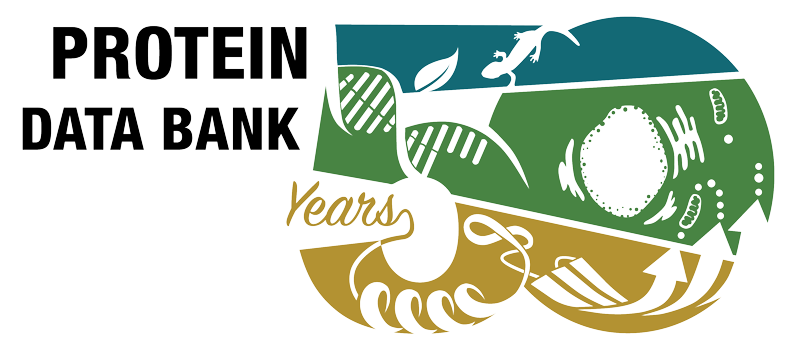Articles - 4d62 mentioned but not cited (3)
- Structure and Sialyllactose Binding of the Carboxy-Terminal Head Domain of the Fibre from a Siadenovirus, Turkey Adenovirus 3. Singh AK, Berbís MÁ, Ballmann MZ, Kilcoyne M, Menéndez M, Nguyen TH, Joshi L, Cañada FJ, Jiménez-Barbero J, Benkő M, Harrach B, van Raaij MJ. PLoS One 10 e0139339 (2015)
- Modeling CAPRI targets 110-120 by template-based and free docking using contact potential and combined scoring function. Kundrotas PJ, Anishchenko I, Badal VD, Das M, Dauzhenka T, Vakser IA. Proteins 86 Suppl 1 302-310 (2018)
- Crystal structure of raptor adenovirus 1 fibre head and role of the beta-hairpin in siadenovirus fibre head domains. Nguyen TH, Ballmann MZ, Do HT, Truong HN, Benkő M, Harrach B, van Raaij MJ. Virol J 13 106 (2016)
Reviews citing this publication (4)
- Adenovirus Structure: What Is New? Gallardo J, Pérez-Illana M, Martín-González N, San Martín C. Int J Mol Sci 22 5240 (2021)
- Glycomics and Proteomics Approaches to Investigate Early Adenovirus-Host Cell Interactions. Lasswitz L, Chandra N, Arnberg N, Gerold G. J Mol Biol 430 1863-1882 (2018)
- Haemorrhagic enteritis of turkeys - current knowledge. Dhama K, Gowthaman V, Karthik K, Tiwari R, Sachan S, Kumar MA, Palanivelu M, Malik YS, Singh RK, Munir M. Vet Q 37 31-42 (2017)
- Assessing Bacterial Interactions Using Carbohydrate-Based Microarrays. Flannery A, Gerlach JQ, Joshi L, Kilcoyne M. Microarrays (Basel) 4 690-713 (2015)
Articles citing this publication (13)
- Polysialic acid is a cellular receptor for human adenovirus 52. Lenman A, Liaci AM, Liu Y, Frängsmyr L, Frank M, Blaum BS, Chai W, Podgorski II, Harrach B, Benkő M, Feizi T, Stehle T, Arnberg N. Proc Natl Acad Sci U S A 115 E4264-E4273 (2018)
- Human adenovirus type 26 uses sialic acid-bearing glycans as a primary cell entry receptor. Baker AT, Mundy RM, Davies JA, Rizkallah PJ, Parker AL. Sci Adv 5 eaax3567 (2019)
- Unravelling the Role of O-glycans in Influenza A Virus Infection. Mayr J, Lau K, Lai JCC, Gagarinov IA, Shi Y, McAtamney S, Chan RWY, Nicholls J, von Itzstein M, Haselhorst T. Sci Rep 8 16382 (2018)
- Genetic and Molecular Epidemiological Characterization of a Novel Adenovirus in Antarctic Penguins Collected between 2008 and 2013. Lee SY, Kim JH, Seo TK, No JS, Kim H, Kim WK, Choi HG, Kang SH, Song JW. PLoS One 11 e0157032 (2016)
- Genomic Characterisation of a Highly Divergent Siadenovirus (Psittacine Siadenovirus F) from the Critically Endangered Orange-Bellied Parrot (Neophema chrysogaster). Athukorala A, Phalen DN, Das A, Helbig KJ, Forwood JK, Sarker S. Viruses 13 1714 (2021)
- Sialoglycovirology of Lectins: Sialyl Glycan Binding of Enveloped and Non-enveloped Viruses. Sriwilaijaroen N, Suzuki Y. Methods Mol Biol 2132 483-545 (2020)
- Deep analysis of Loop L1 HVRs1-4 region of the hexon gene of adenovirus field strains isolated in Poland. Niczyporuk JS. PLoS One 13 e0207668 (2018)
- Epidemiological and molecular analysis of circulating fowl adenoviruses and emerging of serotypes 1, 3, and 8b in Egypt. Adel A, Mohamed AAE, Samir M, Hagag NM, Erfan A, Said M, Arafa AES, Hassan WMM, El Zowalaty ME, Shahien MA. Heliyon 7 e08366 (2021)
- Adenoviruses in Avian Hosts: Recent Discoveries Shed New Light on Adenovirus Diversity and Evolution. Athukorala A, Helbig KJ, Mcsharry BP, Forwood JK, Sarker S. Viruses 14 1767 (2022)
- Molecular Characterization of Hemorrhagic Enteritis Virus (HEV) Obtained from Clinical Samples in Western Canada 2017-2018. Palomino-Tapia V, Mitevski D, Inglis T, van der Meer F, Abdul-Careem MF. Viruses 12 E941 (2020)
- Molecular Characterization of Hemorrhagic Enteritis Viruses (HEV) Detected in HEV-Vaccinated Commercial Turkey Flocks in Germany. Alkie TN, Guenther R, Rautenschlein S. Avian Dis 61 96-101 (2017)
- Structure and N-acetylglucosamine binding of the distal domain of mouse adenovirus 2 fibre. Singh AK, Nguyen TH, Vidovszky MZ, Harrach B, Benkő M, Kirwan A, Joshi L, Kilcoyne M, Berbis MÁ, Cañada FJ, Jiménez-Barbero J, Menéndez M, Wilson SS, Bromme BA, Smith JG, van Raaij MJ. J Gen Virol 99 1494-1508 (2018)
- Elucidation of the Binding Orientation in α2,3- and α2,6-Linked Neu5Ac-Gal Epitopes toward a Hydrophilic Molecularly Imprinted Monolith. Huynh CM, Mavliutova L, Sparrman T, Sellergren B, Irgum K. ACS Omega 8 44238-44249 (2023)







 PMID:
PMID: 